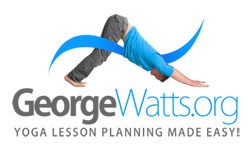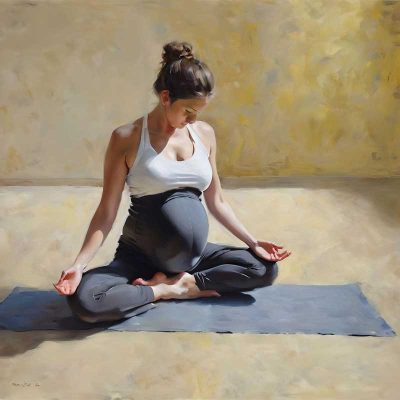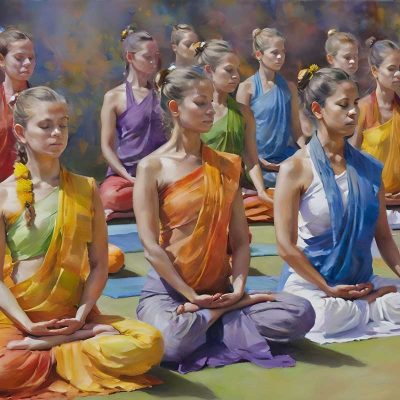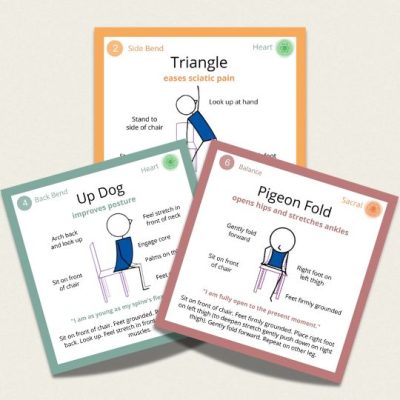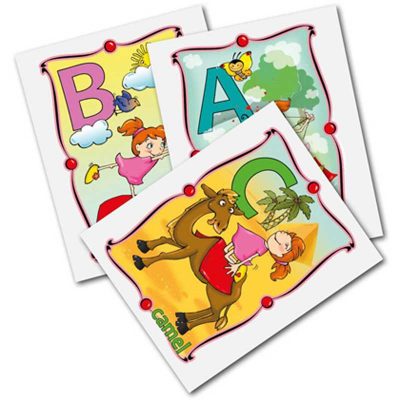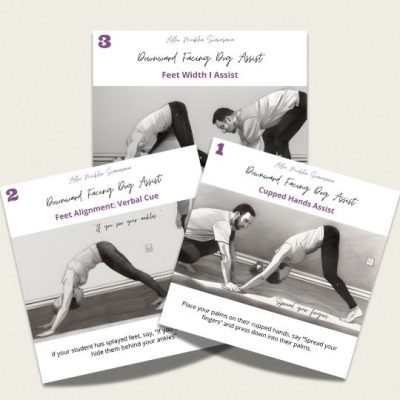Adult ADHD Yoga Lesson Plan Bundle
£9.00
Instant Access ♦ Mac & Windows Compatible
As a BWY Yoga teacher with Adult ADHD, I (George Watts) was compelled to create this “Adult ADHD Yoga Lesson Plan Bundle” for myself. Now, I’m sharing it with you. Ideal for individuals with Adult ADHD, or yoga teachers to give to their “Adult ADHD” students.
Each lesson plan comes with a short, long and stream version.
The short version is perfect for taking into class with you. It’s short and sweet.
The long version has everything you need to practice the lesson plan in-depth (teaching directions, benefits, precautions, modifications and video of each pose).
The stream version is a video stream of the lesson plan.
Hi, my name is George Watts (that’s me down there).
I’m a BWY yoga teacher and creator of the Yoga Genie Lesson Planner. I created this Yoga For ADHD lesson plan bundle for myself (because I have Adult ADHD).
Whether you’ve got a diagnosis from a doctor or simply recognise the telltale signs (symptoms) of a fast mind, this Adult ADHD Yoga Lesson Plan Bundle is designed for you.
Your yoga mat will be our canvas for a unique journey, where we’ll blend the serenity of yin yoga, the rhythm of vinyasa yoga, and the power of mindful breathing.
But that’s not all.
We’re diving deeper.
Alongside poses and yogic breathing, you’ll find a space for meditation and I’ll sprinkle in talks (available as visual handouts that you can download) that touch on the intriguing world of Adult ADHD.
Need some tricks up your sleeve for the daily hustle? You’ll discover those too, as we explore yogic coping strategies for Adult ADHD. So, roll out your mat and let’s embark on this ADHD adventure together.
Hmmm, it’s time to let you know about my Adult ADHD journey…
I’m a qualified BWY (Hatha) yoga teacher and am known in the yoga teacher world for having morphed into reality something called the Yoga Teacher Lesson Plan Kit – an online yoga lesson planning tool for yoga teachers. It’s a tool I initially created for myself because like a lot of people with ADHD, I struggle with my memory. If I walked into my yoga class without a “yoga class plan”, complete chaos and anarchy would ensue!
I only found out that I had Adult ADHD in May 2023 when I was 48 years old. That means I’ve had 48 years of feeling a bit weird and not knowing why.
Like most people with adult ADHD, I have an overactive brain that causes a near-constant stream of anxiety and flat energy (dissociation) due to low levels of dopamine in the brain.
After cramming my brain full of Adult ADHD knowledge (books, podcasts, youtube videos), and making sure of taking notes so I didn’t immediately forget everything, I discovered some really, really good news. The good news that I uncovered was that ADHD is the easiest disorder to find effective coping strategies for (e.g. yogic breathing techniques to help slow the brain down).
After letting my family and close friends know that I have Adult ADHD disorder, I was met with two different reactions.
The first reaction went something like this:
“Yeah, I thought you were a bit weird.”
After opening up to my older brother about my disorder, and apologising for not keeping in touch with him and his family (which is common for people with ADHD), he without hesitation said:
“I always thought you were a bit of a [insert a word starting with a W and ending with er]”.
My older brother said this without a hint of jest. He doesn’t like me. I’ve always known that, even as a kid. I’m a B-type who struggles to cope with mundane, everyday matters.
I struggle with getting to bed on time.
I struggle with getting to sleep.
I struggle with planning my day.
I struggle to take action on goals.
I struggle to get onto my yoga mat.
I struggle with anxiety in social situations.
I struggle with anxiety in all situations (even when spreading Vegan butter on a slice of toast…because my mind is speeding along at a gazillion miles per hour).
I struggle with a constant feeling of tiredness (Even though I have a healthy diet, practice yoga consistently, and do three runs per week. The reason I’m constantly tired isn’t due to my diet or lack of exercise. The reason is that adults with ADHD are “disassociated” due to low dopamine levels, and therefore feel unmotivated).
You name it…and I probably struggle with it. I’m not saying that to be humble. For the past 48 years, I’ve struggled with the basics of leading a ‘normal life’.
Through yoga, meditation, and breathing techniques (included in this bundle), I am able to reduce the struggles and cope with life’s demands more calmly. ADHD is a brain disorder which means I will never have a “normal” brain. I still slip out of good habits (e.g. forgetting to do my yoga practice), but now that I know my brain has a disorder, I’m more gentle and forgiving of my actions (or should I say “in-actions” because when the disorder is at it’s worse, I find myself stuck to the settee with little energy to do anything).
My brother, on the other hand, is an A-type who reached the pinnacle of his profession.
He’s a world-beater.
He sets goals and doesn’t stop until he’s reached them, or died trying.
He’s relentless.
He’s ambitious.
He’s motivated.
He’s pretty much all the things I’m not.
I suppose it was inevitable that whenever he saw his struggling little brother, all he could see was a pile of self-imposed weakness.
I wasn’t sure whether to include this story of my brother, but I think it’s important to provide an honest picture of how someone with adult ADHD can struggle with relationships.
My older brother was the golden child in the family (and I, the black sheep) but he was golden to me, too. He was a God to me as a kid, a golden God, and still to this day looms larger than life in my younger-brother eyes. So, to be told you’re a [nasty word] by your golden God, older brother is quite the thing. It’s something that I’m still processing, mulling over, and chewing over (it’s common for adults with ADHD to struggle to be able to brush off negative comments).
But I fully understand why my brother called me that word.
My brain has a disorder, an ADHD disorder, and not knowing about it (being undiagnosed) for 48 years has caused struggles with most of my relationships. But at least now I know that I’m not alone. Adult ADHD affects millions of people (5 to 15% of the human population).
The second reaction I got when telling family and close friends about my ADHD went something like this:
“You know, I think I might have ADHD, too.”
Both those reactions gave me just enough motivation to start an Adult ADHD yoga class and create this yoga lesson plan bundle for Adult ADHD.
Undiagnosed Adult ADHD is common. Most people with the disorder haven’t got the faintest clue that they have it.
If you can associate with 4 or more of the following 13 “ADHD life challenges”, then you may want to get your Yogic hands on this lesson bundle. I promise it will be a great investment for you.
Below are 13 life challenges that adults with ADHD may commonly experience
Adult ADHD Life Challenge 1: Difficulty with Focus & Concentration
Adults with ADHD often struggle to maintain focus on tasks, especially those that are repetitive or less stimulating. This can lead to difficulties in completing work assignments, reading, or even holding conversations.
Adult ADHD Life Challenge 2: Time Management & Organization Issues
Managing time, prioritizing tasks, and staying organized can be challenging for individuals with ADHD. They might struggle to plan their day, meet deadlines, or remember appointments.
Adult ADHD Life Challenge 3: Procrastination
Many adults with ADHD find it challenging to start tasks, especially those that they find boring or overwhelming. Procrastination can lead to increased stress and last-minute rushes to complete tasks.
Adult ADHD Life Challenge 4: Impulsivity
Acting on impulse without thinking through consequences is a common struggle for adults with ADHD. This can lead to impulsive spending, decisions, or saying things without considering the impact.
Adult ADHD Life Challenge 5: Forgetfulness
Forgetfulness extends beyond misplacing keys; it can also involve forgetting important dates, commitments, or conversations, which can strain relationships and lead to missed opportunities.
Adult ADHD Life Challenge 6: Emotional Dysregulation
Adults with ADHD may experience intense mood swings, including periods of irritability, frustration, and difficulty managing emotions. These emotional fluctuations can impact relationships and personal well-being.
Adult ADHD Life Challenge 7: Problems with Prioritization
Sorting through tasks and figuring out what needs immediate attention versus what can wait can be challenging. This can lead to feeling overwhelmed by a constant influx of tasks and responsibilities.
Adult ADHD Life Challenge 8: Difficulty in Listening & Following Instructions
Adults with ADHD might struggle to listen attentively during conversations or meetings, leading to misunderstandings. Following multi-step instructions can also be a challenge.
Adult ADHD Life Challenge 9: Disorganization & Clutter
Physical spaces like homes or workspaces can become cluttered and disorganized, making it harder to find things and maintain a productive environment.
Adult ADHD Life Challenge 10: Relationship Struggles
Adults with ADHD might have difficulties maintaining close relationships due to challenges in communication, impulsivity, and forgetfulness.
Adult ADHD Life Challenge 11: Employment Challenges
Adults with ADHD might experience difficulties in maintaining steady employment due to issues with time management, focus, and task completion.
Adult ADHD Life Challenge 12: Financial Issues
Impulsivity can extend to financial decisions, leading to overspending and financial instability.
Adult ADHD Life Challenge 13: Academic or Vocational Underachievement
Despite having potential, individuals with ADHD may struggle to perform at their best academically or in their careers due to challenges in focus and organization.
“It’s important to remember that the 13 life challenges listed above can vary widely based on where you are on the ADHD spectrum, your environment, and your personal coping strategies. With proper understanding and support, all thirteen of these adult ADHD life challenges can be managed effectively, allowing you to cope with life. Coping may not sound sexy, but if you have symptoms of Adult ADHD, you’ll know that being able to cope more effectively with everyday life will be absolutely amazing.”
The Adult ADHD Yoga Lesson Plan Bundle Includes All These Goodies…
Yoga Lesson Plan With Three Versions Of Sun Salutations (A, B & C)
In this lesson plan, you have three versions of Sun Salutations (A, B and C), which are classic vinyasa sequences. Vinyasa yoga, with its dynamic and flowing sequences, is beneficial for adults with ADHD (Attention Deficit Hyperactivity Disorder).
This style of yoga (linking breath with movement), can offer a range of advantages that resonate well with the unique challenges faced by individuals with ADHD.
One of the key reasons vinyasa yoga is often recommended for adults with ADHD is its potential to increase dopamine levels. Dopamine is a neurotransmitter associated with feelings of pleasure, motivation, and reward. Many individuals with ADHD have lower-than-average dopamine levels, contributing to difficulty maintaining focus, regulating emotions, and finding motivation.
Engaging in aerobic activities, like vinyasa yoga, has been shown to trigger the release of dopamine in the brain, creating a sense of pleasure and accomplishment.
Here’s how vinyasa yoga’s aerobic nature can benefit adults with ADHD:
- Dopamine Boost: The aerobic aspect of vinyasa yoga, where continuous movement is synchronized with deep breathing, stimulates the production of dopamine. This can lead to improved mood, better focus, and enhanced motivation—essential factors for managing ADHD symptoms.
- Flow State: Vinyasa yoga encourages a state of “flow” where practitioners become fully absorbed in the practice. This can help redirect hyperactive thoughts and create a sense of calm and centeredness.
- Mind-Body Connection: The intentional synchronization of breath and movement in vinyasa yoga promotes mindfulness. For adults with ADHD, this can cultivate better awareness of thoughts and impulses, leading to enhanced self-regulation.
- Physical Release of Energy: Adults with ADHD often have abundant energy. Vinyasa yoga provides a safe and structured environment to channel this energy constructively, reducing restlessness and impulsivity.
- Structured Routine: Vinyasa classes typically follow a structured sequence, which can be comforting and grounding for individuals with ADHD, helping them establish a routine and manage time more effectively.
- Stress Reduction: Stress exacerbates ADHD symptoms. The relaxation and stress-reduction aspects of vinyasa yoga can contribute to a calmer nervous system and improved emotional regulation.
- Sense of Achievement: Completing a vinyasa yoga session, especially as part of a regular practice, can give individuals with ADHD a sense of accomplishment. This achievement can positively impact self-esteem and motivation.
While vinyasa yoga holds promising benefits for adults with ADHD, it’s important to remember that individual experiences may vary. It’s advisable to work with a certified yoga instructor who understands ADHD challenges and can offer modifications and guidance tailored to individual needs. Adding vinyasa yoga into a holistic ADHD management approach that includes proper medical advice, lifestyle adjustments, and coping strategies can help individuals lead more balanced and fulfilling lives.
43 Meditation Exercises: For Adults With ADHD
In this lesson plan, pick one meditation a day for 43 days.
And on day 44 you’ll have gained a new “ADHD coping strategy” and will probably keep going!
I recommend that you keep the bar low by committing only to 5 minutes of meditation per day. If after 5 minutes, you want to continue, go for it!
Meditation can be incredibly beneficial for adults with ADHD (Attention Deficit Hyperactivity Disorder). While it might seem counterintuitive for individuals who struggle with focus and impulsivity, meditation offers a variety of advantages that align well with the challenges faced by those with ADHD.
Here’s why meditation is particularly valuable:
- Improved Focus and Attention: Meditation is essentially a mental workout for concentration. Practicing meditation trains the mind to gently bring its focus back to a specific point (like the breath) whenever it wanders. This skill can be directly applied to daily tasks, helping adults with ADHD build better attention control.
- Enhanced Self-Awareness: Meditation encourages self-reflection and heightened awareness of our thoughts, emotions, and bodily sensations. This self-awareness can help individuals with ADHD recognize triggers, manage impulsivity, and make more intentional choices.
- Stress Reduction: Stress and anxiety can exacerbate ADHD symptoms. Meditation promotes relaxation and activates the body’s relaxation response, helping to reduce stress levels and create a calmer mental state.
- Emotional Regulation: Meditation cultivates mindfulness—the ability to observe thoughts and emotions without immediate reactivity. This skill can empower adults with ADHD to manage emotional fluctuations and make more measured responses.
- Neuroplasticity: Meditation has been shown to promote neuroplasticity—the brain’s ability to reorganize itself and form new connections. This can be especially valuable for individuals with ADHD, as it offers the potential to improve cognitive functions like focus and impulse control.
- Strengthened Executive Function: Meditation targets the brain’s prefrontal cortex—the area responsible for executive functions like planning, decision-making, and self-regulation. Regular meditation may enhance these functions over time, contributing to improved organization and time management.
- Mind-Body Connection: Meditation encourages the synchronization of mind and body. This can be particularly helpful for adults with ADHD, as it helps them become more attuned to their physical sensations and reduce the tendency to “live in the head.”
- Reduced Hyperactivity: Meditation’s calming effects can help manage restlessness and reduce hyperactivity. Adults with ADHD may find that regular meditation sessions offer them moments of tranquillity and respite.
- Increased Patience: Meditation teaches patience—a crucial quality for those with ADHD, who might be accustomed to seeking instant gratification. Learning to sit with discomfort and restlessness during meditation can translate into increased patience in everyday life.
- Enhanced Sleep Quality: Many individuals with ADHD struggle with sleep disturbances. Meditation can aid in promoting relaxation and better sleep patterns, leading to improved daytime functioning.
Establishing a meditation practice requires patience and persistence. Starting with short sessions and gradually increasing the duration can make the process more manageable for adults with ADHD.
25 Yogic Breathing Techniques (Pranayama) For Adult ADHD
In this lesson plan, pick one of the 25 breathing techniques (pranayama), and practice it for 5 to 15 minutes to calm and focus your mind.
Pranayama, the practice of breath control, holds several benefits that make it particularly precious for adults with ADHD (Attention Deficit Hyperactivity Disorder). By harnessing the power of controlled breathing, pranayama offers a range of physiological, psychological, and emotional advantages that align well with the challenges faced by individuals with ADHD.
Here’s why pranayama is beneficial:
- Focused Breathing: Pranayama techniques emphasize intentional, focused breathing patterns. This process requires sustained attention, providing an opportunity for adults with ADHD to practice concentration and improve their ability to sustain focus.
- Calming Effect: Pranayama encourages slow, deep, and controlled breathing. This triggers the relaxation response in the body, reducing stress, anxiety, and hyperactivity—common challenges for individuals with ADHD.
- Mind-Body Connection: Practicing pranayama fosters a stronger connection between the mind and body. This connection can help individuals with ADHD become more attuned to their bodily sensations and emotions, leading to improved emotional regulation.
- Balancing Energy: Pranayama can help balance and regulate the flow of energy in the body. This can be particularly valuable for adults with ADHD, who may experience bursts of excessive energy and restlessness.
- Enhanced Oxygenation: Controlled breathing in pranayama improves oxygenation of the body’s tissues, including the brain. Proper oxygen supply supports cognitive functions and may contribute to improved focus and mental clarity.
- Stress Reduction: Pranayama’s emphasis on mindful breathing calms the nervous system and reduces stress levels. This can be especially beneficial for individuals with ADHD, as stress can exacerbate symptoms.
- Impulse Control: Through breath awareness, pranayama helps individuals become more mindful of their impulses and automatic reactions. This mindfulness can aid in developing better impulse control.
- Improved Self-Regulation: Practicing pranayama cultivates a sense of self-regulation. This skill can empower individuals with ADHD to respond to challenging situations with greater composure and thoughtful decision-making.
- Cognitive Enhancements: Pranayama’s influence on oxygenation and relaxation can lead to improved cognitive functions, such as memory, attention, and processing speed—areas that are often impacted by ADHD.
- Preparation for Meditation: Pranayama serves as an effective gateway to meditation. The focused breath awareness practised in pranayama can help individuals with ADHD establish a calmer mental state, which can aid in transitioning into meditation more smoothly.
When integrating pranayama into an ADHD management plan, it’s important to remember that consistency is key. Starting with simpler techniques and gradually progressing to more advanced practices can help individuals build a sustainable pranayama routine.
23 Yin Yoga Relaxation Poses To Calm Your Adult ADHD Brain
In this lesson plan, pick one of the 23 relaxation exercises and enjoy it for 5 to 10 minutes.
Yin yoga, a slower and more passive form of yoga, offers a range of benefits that can be particularly valuable for adults with ADHD (Attention Deficit Hyperactivity Disorder). The gentle and meditative nature of yin yoga aligns well with the challenges and tendencies associated with ADHD, providing a supportive framework for managing symptoms and promoting overall well-being.
Here’s why Yin yoga is beneficial:
- Mindful Stillness: Yin yoga involves holding poses for extended periods (typically 3-5 minutes) in a relaxed manner. This encourages adults with ADHD to practice stillness, fostering mindfulness and allowing them to develop patience and greater awareness of their thoughts and sensations.
- Stress Reduction: The slow, deep stretches in yin yoga stimulate the parasympathetic nervous system, triggering the body’s relaxation response. This can help reduce stress, anxiety, and the heightened state of arousal often experienced by individuals with ADHD.
- Emotional Regulation: Yin yoga’s focus on holding poses in a serene and non-reactive manner can enhance emotional regulation. This skill can be particularly valuable for adults with ADHD, helping them manage emotional fluctuations and impulsive reactions.
- Body Awareness: Yin yoga encourages participants to pay attention to physical sensations and their body’s responses. This heightened body awareness can help individuals with ADHD become more attuned to their needs, promoting a greater sense of self-care.
- Deep Breathing: The extended holds in yin yoga provide an opportunity to focus on deep, rhythmic breathing. This controlled breathing can trigger the relaxation response, reducing hyperactivity and enhancing concentration.
- Connective Tissue Health: Yin yoga targets the body’s connective tissues, including ligaments, tendons, and fascia. This can help improve joint mobility, reduce muscle tension, and enhance overall physical comfort.
- Enhanced Flexibility: The long holds in yin yoga gently stretch and release muscle fibres. This can contribute to improved flexibility, allowing for greater ease of movement in daily activities.
- Acceptance and Non-Judgment: Yin yoga encourages participants to accept their current state and practice without judgment. This approach can be particularly nurturing for adults with ADHD, who might struggle with self-criticism and feelings of inadequacy.
- Restful Awareness: The meditative quality of yin yoga promotes restful awareness—a state of alert tranquillity. This can help individuals with ADHD achieve a mental state that’s both calm and attentive.
- Preparation for Meditation: The quiet and introspective nature of yin yoga can serve as an effective preparation for meditation. The skills developed in yin yoga, such as mindfulness and focused breathing, can make transitioning into meditation more accessible.
When adding Yin yoga into an ADHD management strategy, it’s important to approach the practice with patience and an open mind.
90 Minute Yin Yang Yoga Class For Adult ADHD: Yin To Restore Energy & Yang To Release Energy
In this lesson plan, you’ll practice Yin Yoga to restore energy and Yang Yoga to release energy.
The Yin-Yang Dynamic System
The circle is divided by an S-shaped line into a dark and a light segment, representing respectively yin and yang, each containing a ‘seed’ of the other.
Yin Yang describes how apparently opposite or contrary forces are actually complementary, interconnected, and interdependent in the natural world, and how they give rise to each other as they interrelate to one another. Many tangible dualities (such as light and dark, fire and water, and male and female) are thought of as physical manifestations of the duality of yin and yang.
Yin and yang can be thought of as complementary (rather than opposing) forces that interact to form a dynamic system in which the whole is greater than the assembled parts. Everything has both yin and yang aspects, (for instance shadow cannot exist without light). Either of the two major aspects may manifest more strongly in a particular object, depending on the criterion of the observation.
The aim is to unite Yin and Yang energy together to allow for a stronger mind and body connection.
Yin metaphors: female, passive, negative, dark, moon, hidden, north side of a hill, overcast.
Yang metaphors: male, active, positive, light, sun, open, south side of a hill.
Life Is About Balance
The atom, which is the fundamental building block of all matter always strives towards the balance of positive (proton) and negative (electron) charges. If it cannot maintain balance within its own structure, it forms clusters that maintain balance with other atoms and molecules are formed.
The point is, that even at the most fundamental level, the universe seeks to maintain balance.
Nature’s endless dance is all about maintaining balance in the natural ecosystem and in the species present on the planet. Why should humans be exempt from this grand cosmic interplay?
Of course, we are not, but we do let ourselves get further out of balance than is healthy at times. In these instances, we would be wise to bring ourselves back into harmony by identifying those areas which are becoming polarized.
Stress and illness are nature’s way of telling you that you’re out of balance.
All life is ruled by the interplay of two dynamic forces known in traditional Chinese medicine as yin and yang. Yin is negative, and yang is positive. Yin is feminine, and yang is masculine. Yin is passive, yang active. They’re opposite yet complementary forces. One is always ascending while the other descends.
The yin-yang symbol is a wonderful expression of this interplay. Even though they’re opposites, yin and yang can’t exist independently. When the yin and yang of your body are in disharmony, it’s like trying to ride a unicycle with the spokes of the wheel short on one side and long on the other. The hub is out of center and your ride is very bumpy. If you continue for long, you’ll break the wheel and perhaps the bike. Just so, if your body continues in disharmony for long, illness occurs.
Balance giving (yang) and receiving (yin).
Doing too much of either will deplete your energy. Balance can be re-established by receiving what was given in excess. Take the time to nourish and nurture yourself. There are many ways to find your way back to balance.
Here are a few suggestions on how to begin:
Practice yin and yang yoga to balance body, mind, and spirit so that you will recognize disharmony before it gets out of hand.
Take a walk and absorb the qi of nature into yourself with every breath.
Take time to eat healthy foods instead of grazing on empty junk.
Drinking plenty of pure, clean water will help flush out toxins and rehydrate you.
Meditate.
Get a massage.
Sun Salutations A Sequence
The lesson plan includes the “Sun Salutations A” sequence.
The beneficial effects of stretching may only last a few hours, so practising Sun Salutations A in the early evening helps relieve symptoms before bedtime.
Sun Salutations A is a shortened version of Sun Salutations (has 11 poses in the sequence).
The Sanskrit for Sun Salutation is Surya Namaskara, which means “salute to the sun“. It is the most common sequence of asanas. Its origins lie in India where its large Hindu population worships Surya, the Hindu solar deity. Symbolic Sun Meanings: life, power, strength, energy, force, clarity, and self. When practising Sun Salutations, you are also “saluting yourself” because practising it provides you with energy and clarity.
As a moving meditation, Surya Namaskar develops focus and peace of mind. Let the breath guide each movement, and extend the movement over the entire length of each inhalation or exhalation. Your gaze follows the direction of movement, linking your mental energy with your physical action.
George's Adult ADHD Coping Strategies Doodles
I love doodling!
The doodles help my ADHD brain remember much better than text ever could! Over the past few months, I’ve uncovered dozens of “Adult ADHD coping strategies”, and turned each one into a doodle. I try to add a little bit of humour to each doodle because I find it helps my ADHD brain recall them far better than just a doodle image without humour.
All my doodles are in A4 format so that you can easily print them out, or give them to your students as handouts if you’re a yoga teacher.
Just in case you’re interested, I created all the doodles in my notebook with a black pen and then recreated them digitally in Procreate – a drawing app on my iPad.
Hope you like them!
Actually, here’s one that you can download and use…
90 Minute Adult ADHD Yoga Class Template
As a thank you for reading (or scrolling) this far, if you’re a Yoga teacher, below is a free template to use when creating a yoga lesson plan for adults with ADHD. Hope you find it useful.
Yoga Lesson Plan for Adults with ADHD (90 minutes)
Aim: Enhance Focus, Mindfulness, and Emotional Regulation for Adults with ADHD through a Comprehensive Yoga Practice.
Objectives:
- Breath-Centered Attention: Guide participants through breath-focused exercises at the beginning to anchor their attention, cultivating the skill to redirect focus during moments of distraction.
- Mindful Movement: Lead a gentle warm-up sequence that combines movement with breath, fostering a present-centred awareness and initiating a state of focused engagement.
- Balancing Energy: Incorporate a vinyasa flow sequence to help channel excess energy into controlled movement, promoting a sense of balance and focus.
- Pranayama for Calm: Introduce a pranayama technique emphasizing extended exhalations, offering a tool to calm the nervous system and improve emotional regulation.
- Stillness and Observation: Guide participants through yin yoga poses, encouraging them to observe sensations, thoughts, and emotions without judgment, fostering mindfulness.
- Guided Meditation for Self-Regulation: Lead a guided meditation focused on observing emotions and impulses, empowering participants to respond consciously instead of impulsively.
- Integration and Carry-Forward: Conclude with a final relaxation, inviting participants to carry the cultivated sense of focus, mindfulness, and emotional balance into their daily lives.
These objectives serve as specific goals to be achieved during the yoga lesson plan, ensuring that students experience a well-rounded practice that addresses their unique needs as adults with ADHD.
Introduction (5 minutes):
- Begin with a brief welcome and introduction.
- Encourage participants to let go of expectations and focus on the present moment.
- Emphasize that the practice is a judgment-free zone.
Breath Awareness and Centering (5 minutes):
- Start in a comfortable seated position.
- Guide participants through a few rounds of deep, mindful breaths.
- Introduce a simple breath awareness technique, such as 4-7-8 breathing or diaphragmatic breathing, to ground their attention.
Warm-up and Gentle Movement (15 minutes):
- Transition into a gentle warm-up sequence.
- Incorporate flowing movements to gradually warm up the body and connect with breath.
- Include poses like Cat-Cow, Child’s Pose, and gentle twists to release tension.
Energizing Vinyasa Flow (20 minutes):
- Move into a slow-paced vinyasa flow.
- Integrate breath with movement, guiding participants through a series of poses.
- Emphasize mindfulness and encourage participants to stay present in each posture.
- Include poses like Downward Dog, Forward Fold, Sun Salutations, and Warrior sequences.
Pranayama Practice (10 minutes):
- Guide participants through a pranayama practice to promote focus and relaxation.
- Choose a technique like Equal Breathing or Box Breathing.
- Instruct participants to focus on their breath while counting the inhales and exhales.
Yin Yoga and Mindfulness (20 minutes):
- Transition to yin yoga, holding poses for longer durations.
- Focus on poses that target areas prone to tension and tightness, such as hips, hamstrings, and shoulders.
- Encourage participants to relax into each pose, using props for support as needed.
- Integrate mindfulness cues, inviting participants to observe sensations and thoughts without judgment.
Guided Meditation (10 minutes):
- Lead participants through a guided meditation focused on mindfulness.
- Use imagery or a body scan to guide their attention inward.
- Emphasize observing thoughts and sensations without attachment.
Final Relaxation (10 minutes):
- Guide participants into Savasana (Corpse Pose).
- Use gentle cues to encourage relaxation and surrender.
- Allow space for stillness and introspection.
Closing and Reflection (5 minutes):
- Invite participants to slowly awaken from Savasana.
- Allow them a moment to reconnect with their surroundings.
- Share a few closing words, emphasizing the benefits of the practice for managing ADHD symptoms.
- Encourage participants to carry the sense of calm and focus from the practice into their daily lives.
Each Lesson Plan Comes In 3 Versions




If you’re still reading, well done! If you have adult ADHD symptoms and got this far it means you didn’t get distracted and that you recognise this bundle is going to be a great investment in YOU.
If you’d prefer to create your own yoga lesson plans, take a peek at my Online Yoga Lesson Planner. It has 3000+ yoga poses, meditations and breathing exercises that you can drag and drop into lesson plans. It’s quick and easy which your ADHD brain will love (so does mine)!
If you live in West Wales (near Newcastle Emlyn) come along to my Adult ADHD yoga class.
If you struggle, like me, with the simple things in life, the good news is that Adult ADHD is the best disorder to have because the coping strategies (e.g. yoga, meditation, breathing techniques) are proven to work well in reducing symptoms of ADHD.
